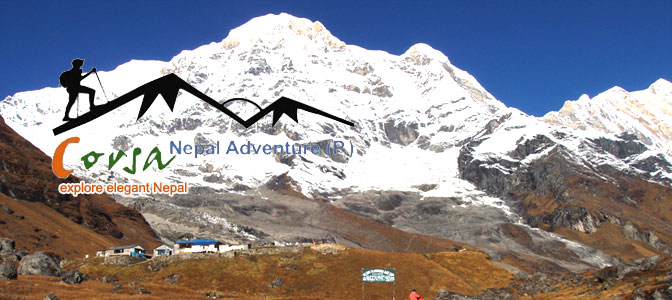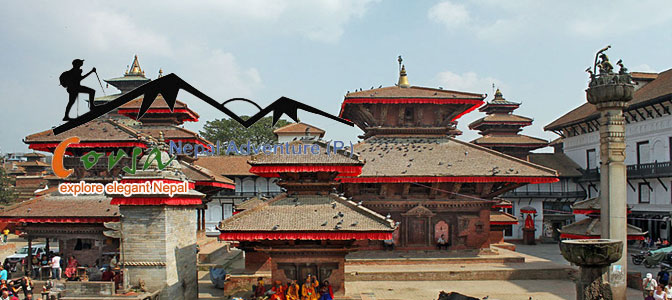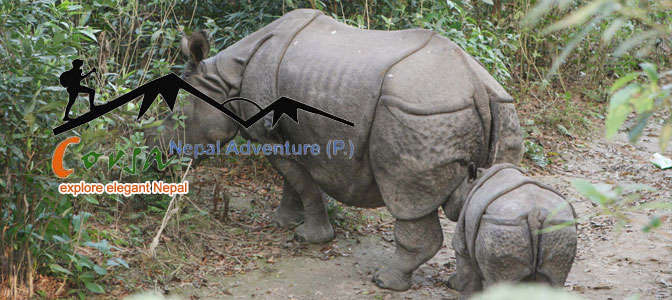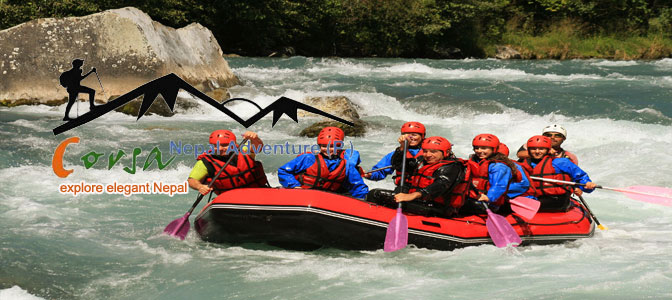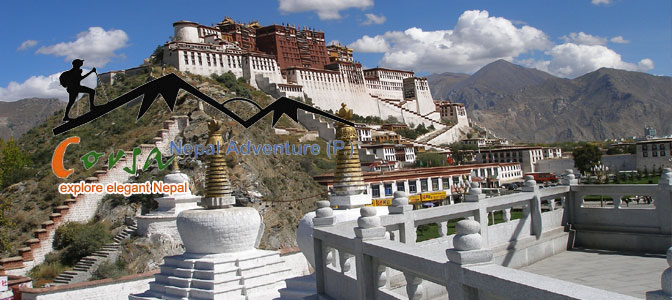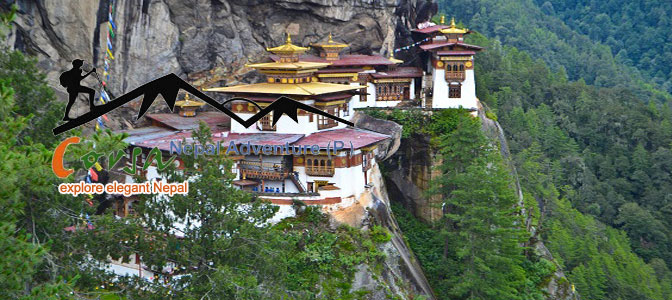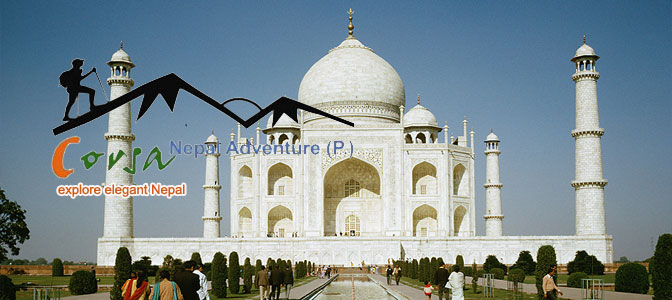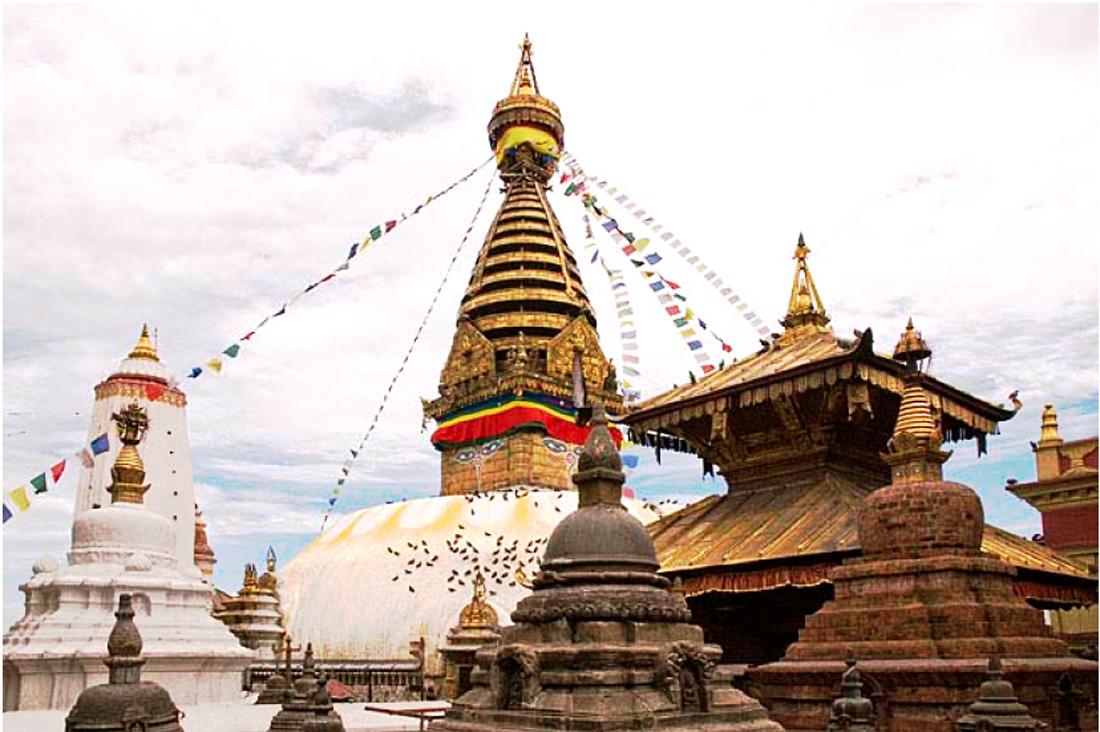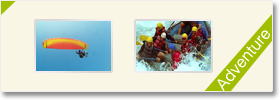Kathmandu - Pokhara - Lumbini Tour
Brief
No. of Days : 9
Price : On Request
Explore three historic medieval cities and Newari culture of Kathmandu, Bhaktapur and Lalitpur. Begin your journey to all major culturally and historically important world heritage sites in Kathmandu valley and then drive to Pokhara, a charming lake city west of Kathmandu. In Pokhara explore different popular cultural, religious and natural sites and enjoy boating at Phewa lake at the back drop of snow - clad Annapurna mountain range. After Pokhara drive to Lumbini, the birth place of Lord Buddha.
Description
Explore three historic medieval cities and Newari culture of Kathmandu, Bhaktapur and Lalitpur. Begin your journey to all major culturally and historically important world heritage sites in Kathmandu valley and then drive to Pokhara, a charming lake city west of Kathmandu. In Pokhara explore different popular cultural, religious and natural sites and enjoy boating at Phewa lake at the back drop of snow - clad Annapurna mountain range. After Pokhara drive to Lumbini, the birth place of Lord Buddha.
Itinerary
Day 01: Arrival in Kathmandu
Upon your arrival in Tribhuvan International Airport, our representative will escort you all the way to hotel. Check in hotel and be refreshed. After being refreshed we will take you to "Garden of Dreams" which is popular for Neo classical historical garden built by former prime minister late Keshar Samsher Janga Bahadur Rana in the early 19th century nearby hotel. After visiting Garden of Dreams we will take you to another historical place - Kathmandu Durbar Square where you will visit different temples around and residence of living goddess (Kumari). Then dinner on your way back to hotel. Overnight at hotel.
Day 02: Kathmandu sightseeing
After breakfast in hotel your sightseeing tour of Pashupatinath Temple, Swoyambhunath Stupa and Bhaktapur Durbar Square
Pashupatinath Temple:
Pashupatinath Temple, with its astonishing architectural beauty, stands as a symbol of faith, religion, culture and tradition. Regarded as the most sacred temple of Hindu Lord Shiva in the world, Pashupatinath Temple's existence dates back to 400 A.D. The richly-ornamented pagoda houses the sacred Linga or phallic symbol of Lord Shiva. Thousands of pilgrims from all over the world come to pay homage to this temple, that is also known as 'The Temple of Living Beings'.
Swoyambhunath Stupa:
Swoyambhu literally means Self-Existent One.Swoyambhunath is believed to have been Swoyambhu established more than 2,500 years ago. An inscription dated 460 A.D. states that the construction was carried out by King Manadeva. By the thirteenth century Swoyambhunath had developed into an important Buddhist learning site. The history of Kathmandu Valley is said to have started with the beginning of Swoyambhu. The largest image of the Sakyamuni Buddha in Nepal is in a monastery next to the Stupa. Behind the hilltop is a temple dedicated to Manjusri of Saraswati - the goddess of learning. Statues and shrines of Buddhist and Hindu deities dot the Stupa complex. Large numbers of Buddhists and Hindus alike visit Swoyambhunath. Swoyambhu is perhaps the best place to observe the religious harmony in Nepal. The Stupa is atop a hill, and requires considerable walk. There is also a road that leads almost to the base of the statue.
Bhaktapur Durbar Square:
Bhaktapur Durbar Square is a unique city located east of Kathmandu at 1,400m above sea level. With an area of 5 Bhaktapur sq. km. this unique city is divided into 24 traditional localities. It was founded by King Ananda Dev in 889 A.D.Bhaktapur in supposed to have been built in the shape of a conch shell, a scared symbol of Lord Vishnu. The world Bhaktapur means The City of Devotees. Bhaktapur; at one time an independent city, was ruled by the Malla Kings. They were very religious and gave importance to their artistic heritage which is evident throughout the city. Some of the significant monuments are:
-The Lion Gate: Built by King Bupatindra Malla in 17 th century A.D.
-Golden Gate: The main entrance to the famous 55 Window Palace and Royal Taleju. Constructed in 1754 A.D
-The statue of King Bupatindra Malla.
-55 Window Palace: This architectural structure dominates the entire Bhadgaon Durbar Square. It is worth admiring.
-Vastala Temple.
-Pashupati Nath Temple.
-Nyatapole Temple.
-Bhairav Nath Temple.
Lunch will be provided in Bhaktapur and after lunch we will drive you to Nagarkot, scenically beautiful spot for nature lovers.
Nagarkot:
Nagarkot is located 32 kilometers east of Kathmandu which is one of the most scenic spots in Bhaktapur district and is renowned for its spectacular sunrise when the weather is clear. Visitors often travel to Nagarkot from Katmandu to spend the night there so that they can then get up early and observe the breathtaking sunrise and preferred weekend getaway for nature lovers. Nagarkot has acquired the fame as one of the best spots to view Mount Everest as well as other snow- topped peaks of the mountain in the eastern Nepal. It also offers an excellent view of the Indrawati river valley lying to the east.With an elevation of 2195 meter, Nagarkot also offers a panoramic view of the Valley and is generally described by visitors as a place whose beauty endures all year round with a harmonious blending of the changing scenery.Overnight at hotel.
Day 03: Nagarkot to Kathmandu Sightseeing
Early morning wake up for sunrise over the Himalayan mountain range and return to hotel and have breakfast. After breakfast continue drive to Changunarayan.
Changunarayan:
Narayan, or Vishnu, is the preserver of creation to Hindus. His temple near Changu village is often described as the most ancient temple in the Kathmandu Valley. A fifth Changu Narayan century stone inscription, the oldest to be discovered in Nepal, is located in the temple compound and it tells of the victorious King Mandev. The temple now covers sixteen hundred years of Nepalese art history. The temple, built around the third century, is decorated by some of the best samples of stone, wood, and metal craft in the Valley. In the words of one tourist guide, \"When you look upon Changu Narayan, you observe the complete cultural development of the Valley.On the struts of the two-tiered Changu Narayan Temple, are the ten incarnations in which Narayan destroyed evil-doers. A sixth-century stone statue shows the cosmic form of Vishnu, while another statue recalls his dwarf incarnation when he crushed the evil king Bali. Vishnu as Narsingha disemboweling a demon is particularly stunning. The western bronze doors sparkle in the evening sunlight, dragons decorate the bells, and handsome Devas stare from the walls. Garuda, half man and half bird, is the steed of Vishnu, and his life-sized statue kneels before the temple. The favorite of many tourists is the statue of Vishnu sitting astride his steed. After Changunarayan we drive to very typical Newari Villages south part of Kathmandu where we will visit two popular villages known by Bungamati and Khokana.
Bungmati and Khokana:
It located beyond the southern belt of Kathmandu, inside the valley, Bungamati is a small Newari village still abiding its tradition as their significant part of life. Very less influenced by the modern city just a few kilometers far from the village, Bungamati exemplifies true beauty of the still living age old culture and civilization, Your journey to Bungamati, starts with a vantage point where one can behold the entire village of Bungamati and Khokana. Walking down the lanes of Bungamati, you will pass through local Newari people busy working intricate designs in wood or stone on their way to creating many more beautiful artifacts keeping their talents running for the future generations to enjoy. Though, small in size, at least 100 people from the village earn their living through wood carving. The village was earlier, the origin of the precession of the chariot of Machindranath, one of the most important festival of the Newari community. Not far from the village of Bungamati, is another interesting Newari village called Khokana, where an important temple of Durga is situated. After today's sightseeing we get back to hotel and stay overnight.
Day 04: Kathmandu to Pokhara
After breakfast at hotel we will drive to Pokhara. Lunch will be provided on the way at best available restaurant. After few hours(6 - 7) of journey you will be taken to the hotel. Check in hotel and be refreshed. After being refreshed you can take your own time walking around the lake side and enjoy the evening. Dinner and overnight at hotel.
Day 05: Pokhara Sightseeing
After breakfast at hotel you will begin the sightseeing tour around Pokhara city covering Devi's Fall(Water fall), Bindyabasini Temple, Seti River Gorge, Old Pokhara Bazar, Museum, Tibetan Refugee Camp, Cave etc. After long day of sightseeing you will be taken back to hotel and relax. in the evening take your free time for shopping in Lake Side market. Overnight at hotel.
Day 06: Pokhara to Lumbini via Tansen
After breakfast at hotel you will be driving to Lumbini the birth place of Lord Buddha via Palpa. Arrival to Lumbini in the late afternoon, check in hotel and relax. In the evening visit one of the monastery and return to hotel for dinner and overnight.
Day 07: Lumbini Pilgrimage Tour
After breakfast your Full day Lumbini sightseeing tour begins, your escorted guide will take you to the major attractions such as: Ashoka Pillar, Mayadevi Temple, different monasteries etc. Return to hotel and overnight. Packed lunch will be provided while on tour. Return to hotel and relax. Dinner and overnight at hotel.
Day 08: Lumbini to Kathmandu
After breakfast at hotel we will transfer to domestic airport for your onward flight to Kathmandu. After 50 minutes of flight you will be landing in Kathmandu domestic airport. Upon your arrival our representative will received you and transferred to hotel. This day will be reserved as leisure for your own activities/shopping etc. In the evening we will take you to the typical Nepalese restaurant where you can have Nepali local food with culture show program. Return to hotel and overnight.
Day 09: Departure
After breakfast at hotel we will drive you to Tribhuvan International Airport for your onward flight to home with lots of smiles and memories of Nepal.
Upon your arrival in Tribhuvan International Airport, our representative will escort you all the way to hotel. Check in hotel and be refreshed. After being refreshed we will take you to "Garden of Dreams" which is popular for Neo classical historical garden built by former prime minister late Keshar Samsher Janga Bahadur Rana in the early 19th century nearby hotel. After visiting Garden of Dreams we will take you to another historical place - Kathmandu Durbar Square where you will visit different temples around and residence of living goddess (Kumari). Then dinner on your way back to hotel. Overnight at hotel.
Day 02: Kathmandu sightseeing
After breakfast in hotel your sightseeing tour of Pashupatinath Temple, Swoyambhunath Stupa and Bhaktapur Durbar Square
Pashupatinath Temple:
Pashupatinath Temple, with its astonishing architectural beauty, stands as a symbol of faith, religion, culture and tradition. Regarded as the most sacred temple of Hindu Lord Shiva in the world, Pashupatinath Temple's existence dates back to 400 A.D. The richly-ornamented pagoda houses the sacred Linga or phallic symbol of Lord Shiva. Thousands of pilgrims from all over the world come to pay homage to this temple, that is also known as 'The Temple of Living Beings'.
Swoyambhunath Stupa:
Swoyambhu literally means Self-Existent One.Swoyambhunath is believed to have been Swoyambhu established more than 2,500 years ago. An inscription dated 460 A.D. states that the construction was carried out by King Manadeva. By the thirteenth century Swoyambhunath had developed into an important Buddhist learning site. The history of Kathmandu Valley is said to have started with the beginning of Swoyambhu. The largest image of the Sakyamuni Buddha in Nepal is in a monastery next to the Stupa. Behind the hilltop is a temple dedicated to Manjusri of Saraswati - the goddess of learning. Statues and shrines of Buddhist and Hindu deities dot the Stupa complex. Large numbers of Buddhists and Hindus alike visit Swoyambhunath. Swoyambhu is perhaps the best place to observe the religious harmony in Nepal. The Stupa is atop a hill, and requires considerable walk. There is also a road that leads almost to the base of the statue.
Bhaktapur Durbar Square:
Bhaktapur Durbar Square is a unique city located east of Kathmandu at 1,400m above sea level. With an area of 5 Bhaktapur sq. km. this unique city is divided into 24 traditional localities. It was founded by King Ananda Dev in 889 A.D.Bhaktapur in supposed to have been built in the shape of a conch shell, a scared symbol of Lord Vishnu. The world Bhaktapur means The City of Devotees. Bhaktapur; at one time an independent city, was ruled by the Malla Kings. They were very religious and gave importance to their artistic heritage which is evident throughout the city. Some of the significant monuments are:
-The Lion Gate: Built by King Bupatindra Malla in 17 th century A.D.
-Golden Gate: The main entrance to the famous 55 Window Palace and Royal Taleju. Constructed in 1754 A.D
-The statue of King Bupatindra Malla.
-55 Window Palace: This architectural structure dominates the entire Bhadgaon Durbar Square. It is worth admiring.
-Vastala Temple.
-Pashupati Nath Temple.
-Nyatapole Temple.
-Bhairav Nath Temple.
Lunch will be provided in Bhaktapur and after lunch we will drive you to Nagarkot, scenically beautiful spot for nature lovers.
Nagarkot:
Nagarkot is located 32 kilometers east of Kathmandu which is one of the most scenic spots in Bhaktapur district and is renowned for its spectacular sunrise when the weather is clear. Visitors often travel to Nagarkot from Katmandu to spend the night there so that they can then get up early and observe the breathtaking sunrise and preferred weekend getaway for nature lovers. Nagarkot has acquired the fame as one of the best spots to view Mount Everest as well as other snow- topped peaks of the mountain in the eastern Nepal. It also offers an excellent view of the Indrawati river valley lying to the east.With an elevation of 2195 meter, Nagarkot also offers a panoramic view of the Valley and is generally described by visitors as a place whose beauty endures all year round with a harmonious blending of the changing scenery.Overnight at hotel.
Day 03: Nagarkot to Kathmandu Sightseeing
Early morning wake up for sunrise over the Himalayan mountain range and return to hotel and have breakfast. After breakfast continue drive to Changunarayan.
Changunarayan:
Narayan, or Vishnu, is the preserver of creation to Hindus. His temple near Changu village is often described as the most ancient temple in the Kathmandu Valley. A fifth Changu Narayan century stone inscription, the oldest to be discovered in Nepal, is located in the temple compound and it tells of the victorious King Mandev. The temple now covers sixteen hundred years of Nepalese art history. The temple, built around the third century, is decorated by some of the best samples of stone, wood, and metal craft in the Valley. In the words of one tourist guide, \"When you look upon Changu Narayan, you observe the complete cultural development of the Valley.On the struts of the two-tiered Changu Narayan Temple, are the ten incarnations in which Narayan destroyed evil-doers. A sixth-century stone statue shows the cosmic form of Vishnu, while another statue recalls his dwarf incarnation when he crushed the evil king Bali. Vishnu as Narsingha disemboweling a demon is particularly stunning. The western bronze doors sparkle in the evening sunlight, dragons decorate the bells, and handsome Devas stare from the walls. Garuda, half man and half bird, is the steed of Vishnu, and his life-sized statue kneels before the temple. The favorite of many tourists is the statue of Vishnu sitting astride his steed. After Changunarayan we drive to very typical Newari Villages south part of Kathmandu where we will visit two popular villages known by Bungamati and Khokana.
Bungmati and Khokana:
It located beyond the southern belt of Kathmandu, inside the valley, Bungamati is a small Newari village still abiding its tradition as their significant part of life. Very less influenced by the modern city just a few kilometers far from the village, Bungamati exemplifies true beauty of the still living age old culture and civilization, Your journey to Bungamati, starts with a vantage point where one can behold the entire village of Bungamati and Khokana. Walking down the lanes of Bungamati, you will pass through local Newari people busy working intricate designs in wood or stone on their way to creating many more beautiful artifacts keeping their talents running for the future generations to enjoy. Though, small in size, at least 100 people from the village earn their living through wood carving. The village was earlier, the origin of the precession of the chariot of Machindranath, one of the most important festival of the Newari community. Not far from the village of Bungamati, is another interesting Newari village called Khokana, where an important temple of Durga is situated. After today's sightseeing we get back to hotel and stay overnight.
Day 04: Kathmandu to Pokhara
After breakfast at hotel we will drive to Pokhara. Lunch will be provided on the way at best available restaurant. After few hours(6 - 7) of journey you will be taken to the hotel. Check in hotel and be refreshed. After being refreshed you can take your own time walking around the lake side and enjoy the evening. Dinner and overnight at hotel.
Day 05: Pokhara Sightseeing
After breakfast at hotel you will begin the sightseeing tour around Pokhara city covering Devi's Fall(Water fall), Bindyabasini Temple, Seti River Gorge, Old Pokhara Bazar, Museum, Tibetan Refugee Camp, Cave etc. After long day of sightseeing you will be taken back to hotel and relax. in the evening take your free time for shopping in Lake Side market. Overnight at hotel.
Day 06: Pokhara to Lumbini via Tansen
After breakfast at hotel you will be driving to Lumbini the birth place of Lord Buddha via Palpa. Arrival to Lumbini in the late afternoon, check in hotel and relax. In the evening visit one of the monastery and return to hotel for dinner and overnight.
Day 07: Lumbini Pilgrimage Tour
After breakfast your Full day Lumbini sightseeing tour begins, your escorted guide will take you to the major attractions such as: Ashoka Pillar, Mayadevi Temple, different monasteries etc. Return to hotel and overnight. Packed lunch will be provided while on tour. Return to hotel and relax. Dinner and overnight at hotel.
Day 08: Lumbini to Kathmandu
After breakfast at hotel we will transfer to domestic airport for your onward flight to Kathmandu. After 50 minutes of flight you will be landing in Kathmandu domestic airport. Upon your arrival our representative will received you and transferred to hotel. This day will be reserved as leisure for your own activities/shopping etc. In the evening we will take you to the typical Nepalese restaurant where you can have Nepali local food with culture show program. Return to hotel and overnight.
Day 09: Departure
After breakfast at hotel we will drive you to Tribhuvan International Airport for your onward flight to home with lots of smiles and memories of Nepal.
Explore three historic medieval cities and Newari culture of Kathmandu, Bhaktapur and Lalitpur. Begin your journey to all major culturally and historically important world heritage sites in Kathmandu [ view ]

